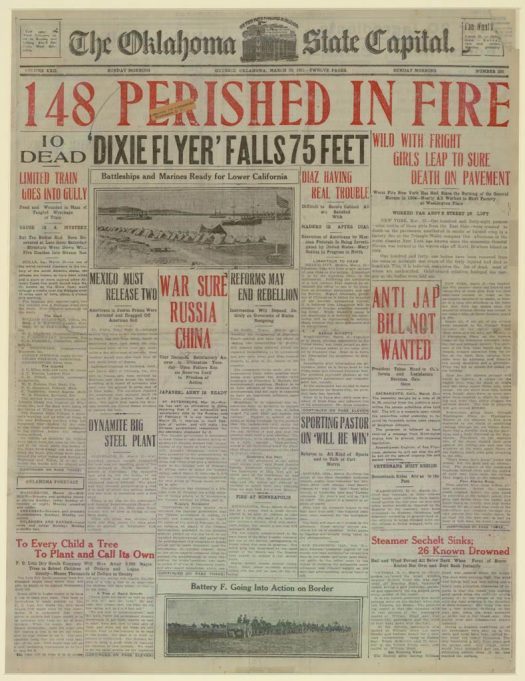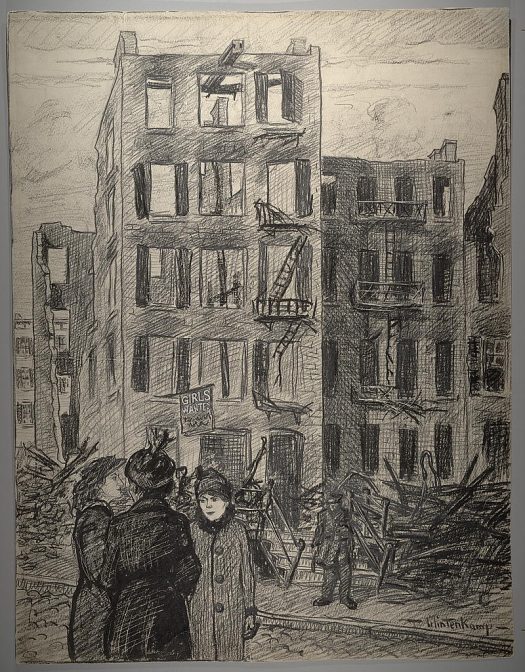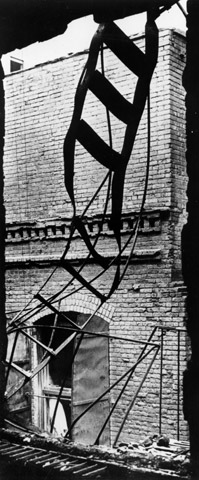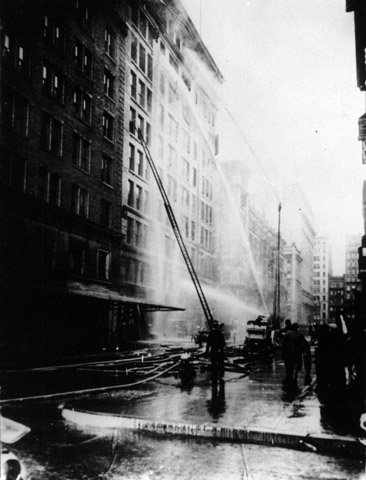Consequences
The Fire
"I looked upon the heap of dead bodies and I remembered these girls were shirtwaist makers. I remembered their great strike last year in which the same girls had demanded more sanitary conditions and more safety precautions in the shops. These dead bodies were the answer."
-Bill Shepherd, newspaper reporter
In returning to work, strikers could not have known what horror they would face a year later. On March 25, 1911, a fire broke out on the eighth floor of the Asch building. As the fire spread, the top floors of the ten-story building were thrown into chaos. Ladders did not reach past the seventh floor. Locked doors prevented workers from escaping. While women on the lower floors were able to escape, those on the upper floors were trapped, and many decided to jump to their deaths rather than face the flames. Some women escaped to the roof where they were helped to safety by those in a neighboring building. In total, 146 workers died.
The public was outraged, calling for justice for the women. Seven women were left unidentified and were buried on April 5, 1911.
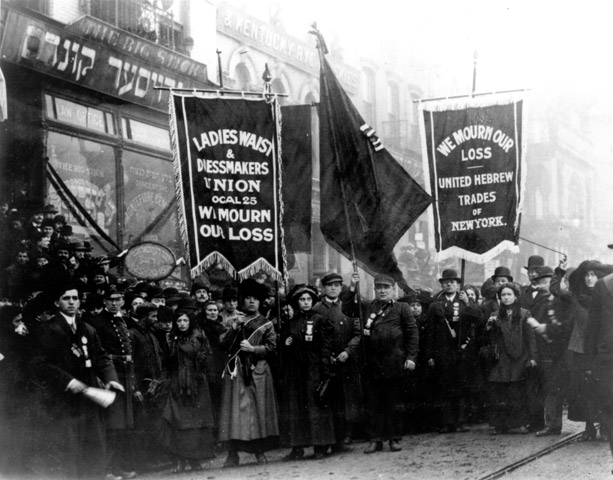
Local 25 members mourning, 1911, Cornell University.
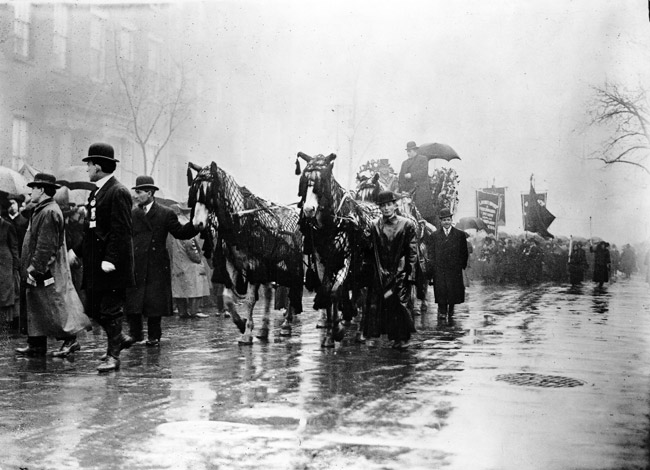
New York citizens mourning, 1911, Cornell University.
At a union memorial meeting, Rose Schneiderman gave a passionate speech, calling for a stronger union:
“I would be a traitor to these poor burned bodies if I came here to talk good fellowship. We have tried you good people of the public and we have found you wanting. The old Inquisition had its rack and its thumbscrews and its instruments of torture with iron teeth. We know what these things are today; the iron teeth are our necessities, the thumbscrews are the high powered and swift machinery close to which we must work, and the rack is here in the firetrap structures that will destroy us the minute they catch on fire.
This is not the first time girls have been burned alive in the city. Every week I must learn of the untimely death of one of my sister workers. Every year thousands of us are maimed. The life of men and women is so cheap and property is so sacred. There are so many of us for one job it matters little if 146 of us are burned to death.
We have tried you citizens; we are trying you now, and you have a couple of dollars for the sorrowing mothers, brothers and sisters by way of a charity gift. But every time the workers come out in the only way they know to protest against conditions which are unbearable the strong hand of the law is allowed to press down heavily upon us.
Public officials have only words of warning to us—warning that we must be intensely peaceable, and they have the workhouse just back of all their warnings. The strong hand of the law beats us back, when we rise, into the conditions that make life unbearable.
I can't talk fellowship to you who are gathered here. Too much blood has been spilled. I know from my experience it is up to the working people to save themselves. The only way they can save themselves is by a strong working-class movement.”
The impact on the Jewish community was astounding. A Yiddish mourning song called Die Fire Korbunes was written about the fire and performed by Metropolitan Klezmer in 2011.
2011, Triangle Fire Open Archive.
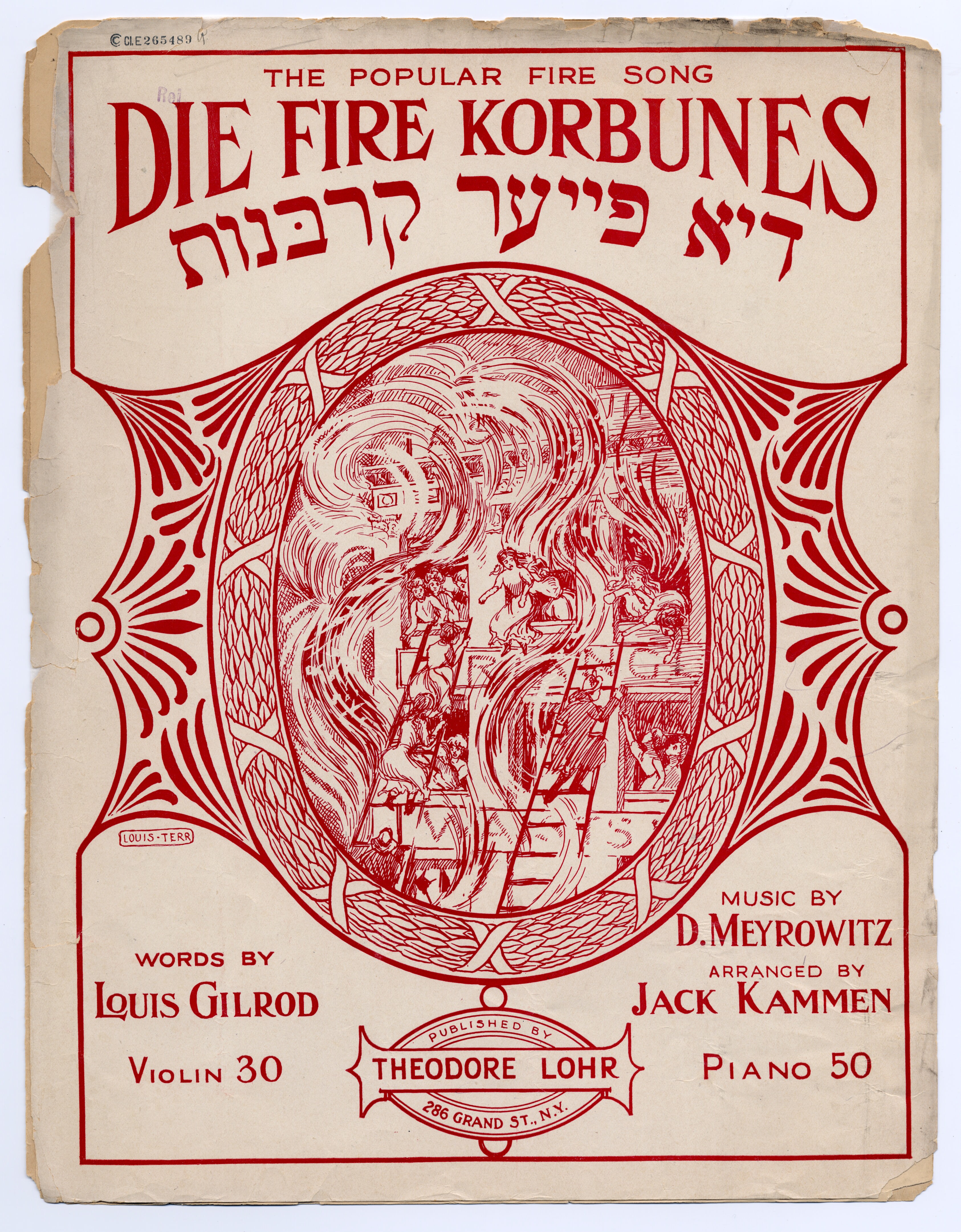
Die fire korbunes, 1911, Library of Congress.
The Fire’s Sacrifices
The hour rang
Work ended in the shirtwaist factory
The workers collected their pay
They hoped to get home early
Suddenly, horror
Terror
A scream
A hellish fire breaks out
Desperate voices from all sides
All struggle to escape
The firemen’s bell rings
Terrified girls fly off the tenth floor
The inferno rages unstoppable
It burns living young bodies
(Refrain)
Who can stand there unfeelingly and
watch?
Who will lament the sacrifices of Hell’s
own fire?
The mothers cry
The fathers wail and recite the
Memorial Prayer for their young
children
Pain
Shameful
The sacrifices of Dollar Land
The sacrifices of Dollar Land
Away to the factory, never to
return, a girl in the bloom of
youth
Mother at home doesn’t know
what becomes of her daughter
Dark night brings word of the
monstrous blaze
The mother recognizes her
daughter, burned
Agony steals her reason
“Quickly, you brilliant people,”
she screams — gone —
“put up a black wedding-canopy!”
Grief and bewilderment push her
to madness and she falls dead
beside her only child
(Refrain)
2011, Triangle Fire Open Archive.
New York formed a committee to investigate conditions surrounding the fire, finding what the workers already knew: The fire preparation was insufficient. That, paired with public outrage, led to Blanck and Harris being put on trial for manslaughter. However, lack of evidence and a corrupt jury led to their acquittal.
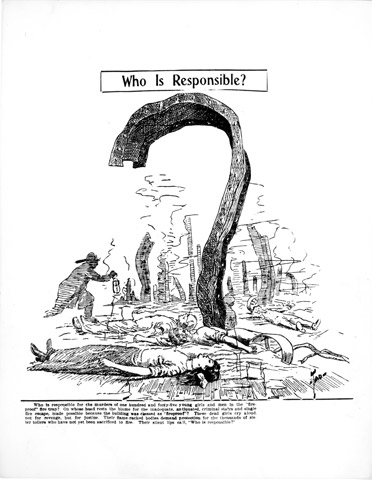
Who is Responsible?, 1911, Cornell University.
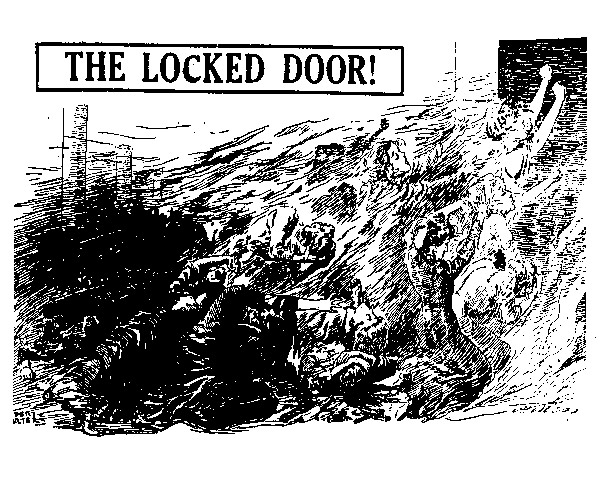
The Locked Door!, 1911, Cornell University.
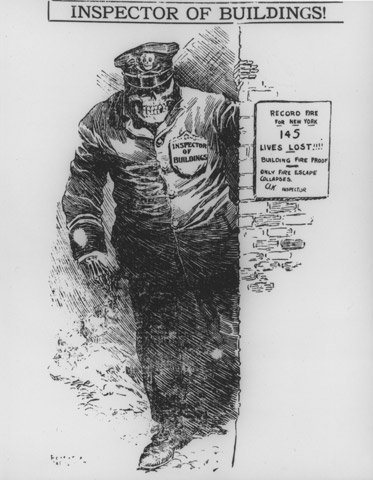
Inspector of Buildings!, 1911, Cornell University.
Legacy
Although the uprising was important in itself, its effects were overshadowed by the tragic fire. New York’s Investing Committee recommended better conditions and fire preparations. The ILGWU grew stronger, eventually leading to the formation of the Occupational Safety and Health Administration in 1970. The strike was during the Progressive Era, and these women later went on to support causes such as women’s suffrage. Women of the Progressive Era also supported causes like temperance, mental health reform, and prison reform. To this day, the fire is known as one of the worst workplace tragedies in New York history. Instead of a strike, it took a tragedy for true change to happen.
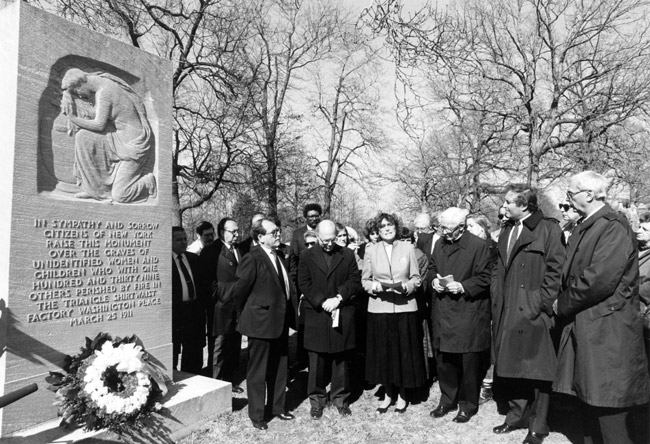
Union members gathered around Longman memorial, 1968, Cornell University.
